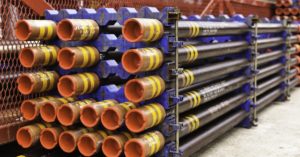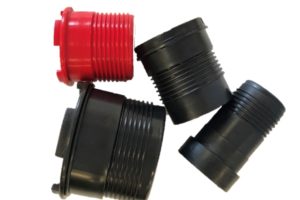Handling pipes in industrial settings can be challenging, requiring the right tools and equipment to ensure safety and efficiency. The right pipe lifting tools not only streamline the process but also significantly reduce the risk of accidents.
What Are the Pipe Lifting Tools
There are several essential pipe lifting tools that play a critical role in ensuring safe and efficient handling. These include:
1. Pipe Clamps
Pipe clamps are one of the most commonly used pipe lifting tools in the industry. These devices are designed to grip and lift pipes securely without causing damage. Available in various sizes and capacities, these clamps can handle pipes of different diameters and weights. They are typically made of robust materials such as steel to ensure durability and reliability.
One critical advantage of pipe clamps is their versatility. They can be used in various applications, from construction sites to manufacturing plants. Additionally, pipe clamps are relatively easy to use. However, ensuring that the clamps are compatible with the specific type of lifted pipe is crucial to avoid accidents or damage.
2. Tongs
Tongs are another essential pipe lifting tools, especially when dealing with larger or more irregularly shaped pipes. These tools grip the pipe from both sides, providing a secure hold. Tongs come in different designs, such as mechanical and hydraulic, each suited for specific applications.
Mechanical tongs are typically operated manually and are suitable for lighter pipes. On the other hand, hydraulic tongs are powered by hydraulic systems and are used for heavier loads. The main advantage of using tongs is their ability to handle various pipe sizes and shapes. Additionally, they offer high precision, allowing workers to lift and position pipes accurately.
3. Vacuum Lifters
Vacuum lifters offer a modern and highly efficient solution for pipe lifting. These tools use vacuum technology to create a strong suction force that securely grips the pipe. Vacuum lifters are particularly advantageous when handling pipes with smooth surfaces, as they provide a firm hold without the need for physical clamps or hooks.
One key benefit of vacuum lifters is their ability to handle pipes of various sizes and materials, including metal, plastic, and concrete. They are also highly versatile, as they can be used in vertical and horizontal lifting operations.
Additionally, vacuum lifters reduce the risk of surface damage to the tubes, making them ideal for handling pipes that require a pristine finish. The ease of use and efficiency of vacuum lifters make them popular in many industrial settings.
3. Pipe Hooks and Spreaders
Hooks and spreaders are another set of essential pipe lifting tools. Pipe hooks are typically used with cranes or hoists and are designed to lift materials by hooking onto their ends. These hooks are made from high-strength materials to withstand heavy loads and provide a secure grip.
Spreaders, on the other hand, distribute the weight of the pipe evenly during lifting. They are particularly useful when handling long pipes, preventing them from bending or sagging. Spreaders come in various designs, including fixed and adjustable models, allowing them to accommodate different pipe lengths and weights.
4. Hydraulic Pipe Lifters
Hydraulic pipe lifters are powerful and versatile tools for handling pipes, particularly in heavy-duty applications. These lifters use hydraulic systems to generate the lifting force, providing a smooth and controlled lifting operation. Hydraulic lifters come in various designs, including handheld models for small and large tubes, and machine-operated models for heavy and large-diameter pipes.
One of the primary advantages of hydraulic pipe lifters is their ability to handle very heavy loads with precision and control. They often feature adjustable lifting arms and grips, allowing them to accommodate different pipe sizes and shapes.
Furthermore, hydraulic lifters can be equipped with remote controls, enabling operators to manage the lifting process from a safe distance. This level of control and versatility makes hydraulic pipe lifters an essential tool in many industrial and construction settings.

Using the Right Pipe Lifting Tools!
If you have further questions about pipe lifting equipment, contact MSI Pipe Protection Technologies. Our experts in Houston, TX, can provide detailed information and guidance on the best tools and practices for your needs. Ensuring you have the right equipment and knowledge is key to maintaining a safe and efficient working environment. Call us and let us help you make the right choices for your pipe handling operations.




